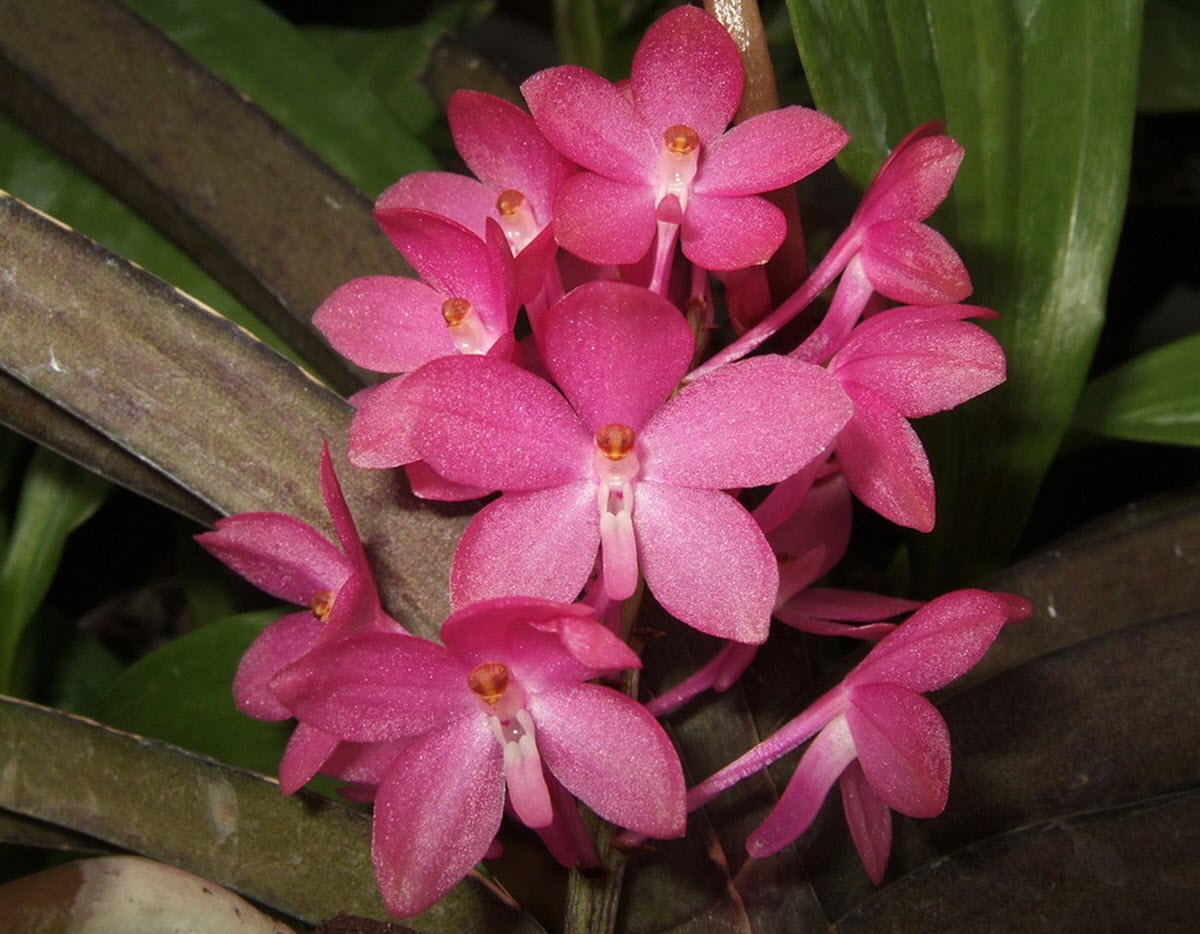Vanda Orchid Care
Contents
The name Vanda comes from Sanskrit, an ancient Indian language, and is today used for one of the genera in the orchid family. Vanda orchids hail from northern Australia and eastern Asia, and you can, for instance, find them in India, Himalaya, southern China and the Philippines. Vanda orchids are found in various habitats and you can learn a lot about your flower by looking at its leaves. If the leaves are cylindrical and fleshy, your Vanda comes from a region where it had to survive dry seasons. Vanda orchids from regions where dry periods do not occur are instead equipped with flat ovoid leaves. If you provide your plant with proper Vanda orchid care the spike can sometimes bloom for over eight weeks. Well cared for plants can also bloom more than once a year.

Vanda ampullacea
Watering
The terrestrial Vanda species are less sensitive to moist in the potting medium than species that grow on trees or rocks in the wild, but this does not mean that a terrestrial Vanda orchid will appreciate being left standing with “wet feet”. Regardless of which type of Vanda orchid you have you should never water it until the potting medium has dried out completely.
Nutrients
Giving your plants correct amounts of fertilizer is naturally an important part of Vanda orchid care and adequate amounts of the right fertilizer can make a Vanda bloom more than once a year. Your Vanda will appreciate a high nitrogen fertilizer (25-9-9) 12 months a year. For most brands, one teaspoon per month is the preferred dose. Never give the entire dose in one serving since this is a very unnatural way for an orchid to receive nutrients. Split up the dose into several servings and spread them out over the month.
Temperature
Vanda orchids appreciate warm days and colder nights. The ideal day temperature is 75 – 85˚ F (24 – 29˚ C), while the preferred night temperature is 65-75˚ F (18-24˚ C). A well established Vanda orchid can normally survive occasional accidents temperature wise, but if it becomes a habit it will seriously injure your orchid.
Light
Giving your plant proper amounts of light and shade is an important aspect of successful Vanda orchid care. Vanda orchids need a lot of light, but intense mid-day light can scorch the leaves and make them yellow. It is therefore best to find a location in your home where your Vanda orchid will be shaded from 11 am to 3 pm, while still being able to receive plenty of morning and afternoon sun. If the leaves turn from light green to dark green, your Vanda orchid needs some more sun.
Potting medium
A majority of the Vanda species are epiphytic, but some are lithophytic or even terrestrial. This must be taken into consideration when you chose potting medium for your Vanda. Epiphytic and lithophytic species grow on trees and rocks respectively, while terrestrial species grow in soil. If it is impossible to obtain any detailed information about the origin of your Vanda, a coarse potting medium such as medium or coarse grade fir bark is usually the safest bet.
Repotting Vanda orchids
Vanda orchids should not be repotted out of habit; only repot your orchid if you can see that it has clearly outgrown its pot. Frequent repotting will only disturb Vanda orchids. There are however situations when you must act immediately and repot your Vanda, e.g. if the potting medium fails to drain properly, if mould infestations occur, or if the medium starts to give of a foul smell.
Vanda orchid trivia!
The National Flower of Singapore is a Vanda orchid; a hybrid named Vanda Miss Joaquim. The plant is named in honour of horticulturalist Agnes Joaquim who grew it in her garden in Tanjong Pagar. There exists several different varieties of Vanda Miss Joaquim and it is the variety named “Agnes” that was picked by the judges as the national flower of Singapore. “Agnes” is said to represent the Singapore spirit by being colourful, tough and resilient. It is also capable of blooming throughout the year.